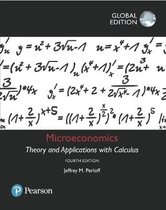Summary
Samenvatting: Micro-Economie/Bedrijfseconomie - KULeuven: Schakeljaar Handelswetenschappen (Professor Mike Smet)
Samenvatting van het vak 'Micro-Economie' voor het schakeljaar van Handelswetenschappen aan KULeuven (Antwerpen) gegeven door Professor Mike Smet. Dit vak komt overeen met 'Bedrijfseconomie' gegeven in het tweede jaar van het bachelorprogramma Handelswetenschappen. Deze samenvatting is gebaseerd op...
[Show more]
Last document update: 3 year ago
Preview 6 out of 137 pages
Summarized whole book?
No
Which chapters are summarized?
1 - 14
Uploaded on
December 21, 2020
File latest updated on
January 12, 2021
Number of pages
137
Written in
2020/2021
Type
Summary
Book Title: Microeconomics
Author(s): Jeffrey M. Perloff, Addison-Wesley
Edition: Unknown ISBN: 9781292162744 Edition: 1
Institution
Katholieke Universiteit Leuven (KU Leuven)
Education
Handelswetenschappen
Course
Micro-economie (BKULY05066)
All documents for this subject (9)
By: Jolien21 • 3 year ago
By: jimvandenhanenberg • 3 year ago
By: poelmansmichiel • 3 year ago
$8.58
100% satisfaction guarantee
Immediately available after payment
Both online and in PDF
No strings attached
Micro-Economie





